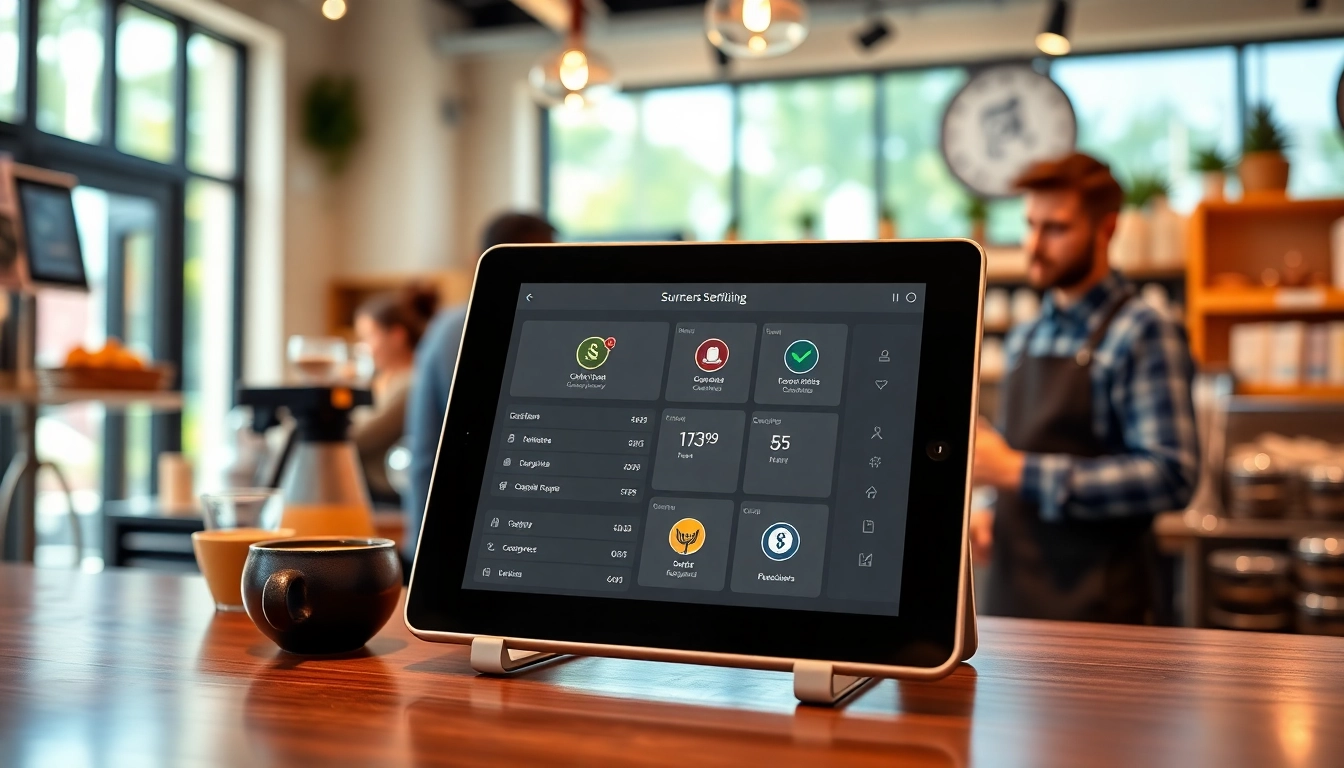Understanding POS Membership Software
In the fast-evolving landscape of retail and service-oriented business, POS (Point of Sale) membership software is transforming the way businesses interact with their customers. This multifaceted software not only facilitates transactions but also manages customer relationships, offering loyalty programs, subscriptions, and membership management. By integrating POS systems with membership management, businesses can streamline operations, enhance customer satisfaction, and boost revenue. For companies looking to implement an effective solution, understanding the essentials of POS Membership Software is crucial.
What is POS Membership Software?
POS membership software is a sophisticated tool that enables businesses to manage sales and customer relationships seamlessly. This software allows merchants to track sales, manage membership details, process payments, and analyze customer data all from one platform. Whether you’re running a gym, a bookstore, or a country club, a POS membership system can enhance your operational efficiency by providing all-in-one solutions tailored to your customers’ needs. Membership software typically incorporates features like member directories, payment processing, and loyalty rewards systems, ensuring that businesses can effectively cater to returning customers.
Key Features of Effective Membership Software
- Member Management: A robust member management system allows for the easy tracking of member details, including subscriptions, personal information, and transaction history.
- Payment Processing: Integrating payment processing capabilities ensures that transactions are handled smoothly and securely, accepting various payment methods including credit cards, mobile payments, and cash.
- Loyalty Programs: Designing and maintaining loyalty programs encourages repeat business by rewarding customers with points or discounts based on their purchases.
- Reporting and Analytics: Effective POS membership software includes analytics tools that provide insight into sales trends, customer preferences, and overall business performance, enabling data-driven decision-making.
- Integration Capabilities: The ability to integrate with other systems (like CRM or email marketing services) enhances the functionality of POS software and streamlines workflow processes.
Benefits of Integrating POS with Membership Management
Integrating POS systems with membership management brings a multitude of benefits that can help businesses not only retain clients but also cultivate lasting relationships. These include:
- Increased Efficiency: Automation of membership renewals, payment processing, and reporting enables staff to focus on customer service rather than administrative tasks.
- Improved Customer Experience: With easy access to member profiles and preferences, businesses can tailor their services and offers, enhancing customer satisfaction.
- Comprehensive Insights: By analyzing customer purchase data, businesses can tailor marketing strategies to match customer behavior and preferences, leading to increased sales.
- Enhanced Member Loyalty: Membership loyalty programs incentivize repeat customers, driving engagement and increasing average transaction value.
Challenges in Choosing POS Membership Software
While the advantages of adopting POS membership software are clear, the selection process can be fraught with challenges. Making informed choices requires careful consideration of various factors.
Common Pitfalls to Avoid
In the quest for effective POS membership software, businesses often run into common pitfalls:
- Overlooking Scalability: Choosing a system that cannot grow with the business may lead to future frustrations and additional costs. Make sure to select software that can accommodate an increasing number of members and transaction volumes.
- Neglecting Customer Support: Opting for software without robust support can lead to issues down the line. Evaluate the vendor’s customer service offerings and user reviews.
- Ignoring System Compatibility: Ensure that the POS software can integrate with existing systems, such as accounting software or inventory management tools, to avoid operational hiccups.
Assessing Your Business Needs
Understanding specific business needs is crucial in selecting the right POS membership software. Key considerations include:
- Type of Business: Whether it’s a gym, retail shop, or service-oriented business, different industries have unique requirements that the software should address.
- Feature Requirements: Identify essential features that your business cannot do without, such as mobile compatibility, marketing tools, or customer relationship management capabilities.
- Budget Constraints: Setting a realistic budget not only ensures you get a good return on investment but also keeps your spending in check as you scale.
Evaluating Software Options
Once your business needs are clear, it’s time to evaluate available options. Here are practical steps to ensure you choose the right POS membership software:
- Research vs. Review: Start with online reviews and feedback to shortlist potential software, then look for independent reviews and case studies to gauge performance.
- Demo and Test: Request demonstrations or trial periods. Many software vendors offer free trials that allow you to assess usability and features firsthand.
- Request References: Don’t hesitate to ask vendors for references from current users to get a clearer picture of how the software performs in real-world scenarios.
Implementation Strategies for POS Membership Software
Successfully implementing POS membership software requires careful planning and execution. Here are strategies to ensure a smooth transition.
Preparing Your Business for Integration
Proper preparation can significantly reduce complications during the implementation phase:
- Develop a Timeline: Set clear timelines for each phase of implementation, from initial setup to going live.
- Involve Stakeholders: Gather input from staff who will be using the system regularly. Their insights can guide selections and help in addressing concerns early.
- Establish Data Migration Plans: Ensure that existing member data can be smoothly transferred into the new system without loss.
Training Staff on New Software
Effective training is key to achieving a successful rollout of the new system:
- Hands-On Training: Provide hands-on training sessions to ensure all staff members are comfortable using the software on a day-to-day basis.
- Resources and Manuals: Create resource materials such as user manuals or quick reference guides that staff can refer to post-training.
- Feedback Mechanism: Implement a system for staff to provide feedback on the software’s usability, which can help identify any training needs or adjustment requirements.
Testing and Launching Your System
A beta launch is an effective strategy for minimizing risks associated with full deployment. Steps include:
- Conduct System Testing: Verify that all functions work correctly before the full launch. This includes testing different payment methods, loyalty programs, and reporting features.
- Get Feedback: Gather insights from staff and select customers about their experience with the new system during the testing phase.
- Phased Rollout: Consider launching the software in phases, starting with less critical functions before fully committing to the entire system.
Optimizing Membership Experience with POS Software
Once the POS membership software is successfully implemented, the focus shifts to optimizing the member experience through its functionalities.
Enhancing Customer Engagement
Effective engagement strategies can significantly boost member loyalty. Here are techniques to consider:
- Leveraging Personalization: Use data collected through the POS system to tailor marketing materials, offers, and communication according to member preferences.
- Feedback Mechanisms: Provide opportunities for members to share their opinions on services, creating a more member-oriented business culture.
- Regular Communication: Use automated emails or SMS to keep members informed about upcoming events, exclusive offers, or changes to their membership status.
Utilizing Data Analytics for Insights
Data analytics can enhance decision-making and strategic planning:
- Purchase History Insights: Evaluate trends from existing member purchases to drive marketing initiatives that cater to identified demands.
- Membership Trends: Analyze data to understand membership renewals and cancellations and tackle issues proactively.
- Performance Metrics: Track KPIs such as customer satisfaction, average transaction values, and the effectiveness of promotional campaigns.
Implementing Loyalty Programs through Your POS
Loyalty programs are crucial for retaining members and attracting new ones. Effective strategies involve:
- Tiered Rewards Structures: Create tiered memberships with increasing benefits to incentivize deeper engagement.
- Points-Based Rewards: Implement points systems that members can redeem for products, discounts, or exclusive experiences, increasing perceived value.
- Referral Incentives: Encourage members to refer new customers by providing them with benefits for each new member that joins.
Future Trends in POS Membership Software
As technology continues to advance, several key trends are shaping the future landscape of POS membership software.
Emerging Technologies Shaping POS Systems
New technologies are continuously transforming how businesses operate:
- Contactless Payments: The demand for contactless payment options is skyrocketing, urging POS software to incorporate NFC and mobile payment solutions.
- AI-Driven Insights: Businesses are increasingly utilizing artificial intelligence to gain deeper insights into customer behavior and enhance personalization measures.
- Cloud-Based Solutions: The preference for cloud-based systems continues to grow due to their scalability, lower upfront costs, and ease of access.
Adaptability in a Rapidly Changing Market
The marketplace constantly evolves, and successful POS membership solutions will need to adapt:
- Rapid Updates: SaaS models ensure that software can be updated regularly without major disruptions, allowing businesses to stay competitive.
- User-Centric Features: POS software must evolve with user feedback to remain relevant, offering features that truly matter to customers.
- Flexible Integrations: As ecosystems grow more complex, the ability to integrate with various other tools becomes increasingly essential.
Anticipating Customer Needs and Preferences
Understanding and anticipating customer needs remain top priorities for businesses integrating membership software. Key strategies include:
- Market Research: Regular surveys and market analysis can provide valuable insights into member preferences and behaviors.
- Dynamic Offerings: Adapt products and membership structures based on real-time data analytics for improved satisfaction and retention.
- Staying Ahead of Competitors: Keeping abreast of industry trends ensures that your offerings surpass what competitors provide.



